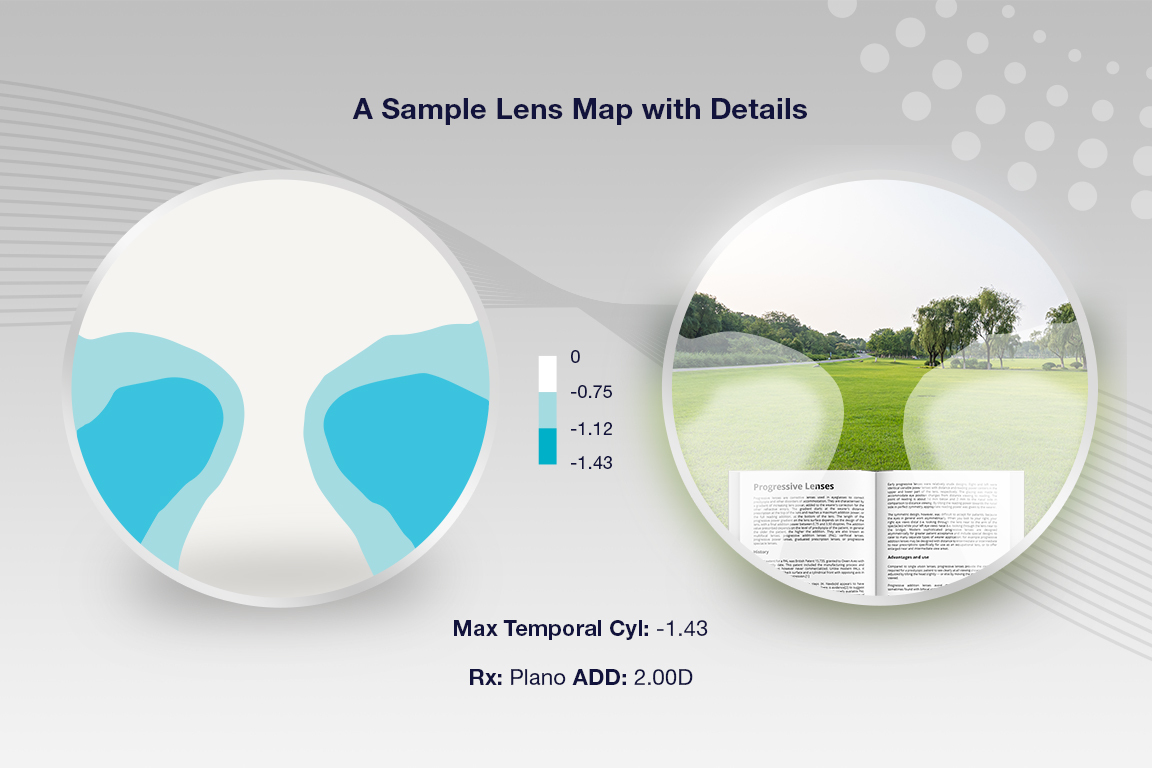Most optometry practices are well-acquainted with presbyopes, particularly given Australia’s ageing population. As medicine and health literacy advance in many areas, Australians are enjoying longer life spans1 and, with this, an expectation to continue an active lifestyle for more years than previous generations. From an optometrist’s point of view, this means you can expect to encounter an increasing number of presbyopic patients (unless you practise in a narrow niche area such as paediatrics).
Though health status can vary considerably between individuals of the same vintage, many clinicians would be familiar with the 65-year-old who still goes for regular mountain hikes or the septuagenarian looking for an optical correction option for when she goes snorkelling next summer.
Spectacles for Presbyopia
Dispensers and clinical optometrists alike would be familiar with the limitations of glasses for presbyopia. Conventional bifocal and multifocal glasses are designed to provide distance vision through the top section of the lens and near vision through the bottom. Though this works well in many scenarios, the positioning of these sections of varying power can sometimes be a significant hindrance. For example, the mechanic trying to perform repairs on the undercarriage of a car or a painter working on the upper part of a large canvas will have difficulty focusing on their near work with this elevated gaze position. The most common scenario may be the presbyope tilting their chin upwards to view a desktop computer screen through their multifocal glasses or the presbyopic myope removing their glasses altogether to read, especially when reclined in bed.
Granted, all vision correction options for presbyopia will carry limitations, from refractive surgery to spectacles to contact lenses. Compared to the natural accommodative ability enjoyed during the pre-presbyopic years, near vision will simply never be the same. However, depending on your presbyopic patient’s specific activities and lifestyle, some optical correction options are better than others.
Contact Lens Options for Presbyopia
Currently, there are three arrangements for correcting a presbyopic patient with contact lenses. These are:
- Single-vision distance contact lenses with single-vision near glasses worn over the top as needed
- Multifocal design contact lenses
- Monovision, with one eye corrected for distance vision and the other for near or intermediate vision
Each approach comes with its own set of advantages and disadvantages, which makes it important to take the time to discuss your patient’s visual needs and habits before making your recommendations. For example, a presbyopic patient who is reluctant to compromise on their distance visual acuity and requires infrequent near vision would be more likely to prefer to wear reading glasses over their distance prescription contact lenses. Conversely, another patient whose occupation requires constantly switching between papers on their desk to their computer screen to clients entering the office may be better off in multifocal contact lenses compared to a monovision arrangement.
The variety of contact lenses available has expanded significantly in recent years, particularly for the presbyopic market. We now have several options for multifocal contact lens designs in both daily disposables and monthly modalities. Lens materials have also advanced, making them more friendly for our presbyopes, among whom we find an increased prevalence of dry eye.2
Some clinicians may be hesitant to offer contact lenses to their presbyopic patients, given a poor success rate in the past and the possibility of requiring extended chair time to fit this demographic into contacts. However, it can be immensely rewarding to improve your patient’s quality of life by offering this form of optical correction, particularly for those whose hobbies and lifestyle mean that glasses are a significantly suboptimal option.
4 Tips When Prescribing Contact Lenses for Presbyopes
As with anything, there can be a learning curve associated with fitting your presbyopic patients into contacts for their first time. For a presbyopic hyperope, teaching them to insert a lens when they can’t even see themselves clearly in the mirror will be a challenge! Here are some hints to get you started and improve your experience when prescribing contact lenses for your presbyopic patients.
1. Have an understanding of who might be an eligible candidate for presbyopic contact lens options.
Though we have many options for contact lenses, CooperVision is still the only manufacturer offering multifocal toric contact lenses. For presbyopes with significant astigmatism, monovision correction with single-vision toric lenses or a distance-correction with reading glasses over the top would be the only options. However, for astigmatic patients who would find monovision limiting (for example, those with frequent intermediate vision requirements) there may simply not be a sufficient contact lens option for them. Other contraindications include monocular status and factors that apply to all contact lens wearers, such as those with significant ocular surface disease.
2. Consider offering contact lenses to all your suitable presbyopic patients.
You never know whether someone will be interested in contacts unless you ask. The reality is that many patients simply aren’t aware that contact lenses are an option for them and so are unlikely to raise the question themselves. Some have just never thought about it or just assumed that they were ineligible. Others may have been successful contact lens wearers in their younger years but dropped out due to factors such as dry eye issues or the onset of presbyopia.
3. Understand goals and set expectations.
Nothing sets you up for failure more than forgetting to establish expectations with your patient. Take the time to understand your patient’s visual demands and motivations for wearing contacts. Do they only want to wear the lenses for cycling, or do they intend to work on a computer for hours every day? Not only will this ensure you’re taking the right approach to choosing the type of contact lens arrangement, but it will also provide the opportunity to explain where the limitations lie with the option you’re recommending. At this initial consultation, you should also explain the fitting process, including costs, how many appointments are expected, and the requirement for adaptation.
4. Follow the manufacturer-provided fitting guide.
Suppliers of multifocal contact lenses have helpfully provided a fitting guide for their products. As your contact lens manufacturer representative will drum into you, these guides have been developed after much research and testing. Adhering to the guides will help to minimise the back and forth from tweaking the prescription, saving both you and the patient time.
Summary
Diving into the presbyopic contact lens market has the potential to improve your practice revenue as well as win over loyal patients whom you’ve freed from the limitations of glasses. Though there is no perfect solution once presbyopia sets in, optometrists should make every effort to offer all available options to their presbyopes.
References
- AIHW. Older Australians. https://www.aihw.gov.au/. 2021. Available at: https://www.aihw.gov.au/reports/older-people/older-australians/contents/demographic-profile. (Accessed May 2023).
- de Paiva CS. Effects of Aging in Dry Eye. Int Ophthalmol Clin. 2017 Spring;57(2):47-64.Optician. Essential contact lens practice 10 – Managing the presbyope. https://www.opticianonline.net/. 2023. Available at: https://www.opticianonline.net/cpd-archive/6052. (Accessed May 2023).Contact Lens Spectrum. Prescribing for Presbyopia. https://www.clspectrum.com/. 2019. Available at: https://www.clspectrum.com/issues/2019/november-2019/prescribing-for-presbyopia. (Accessed May 2023).Modern Optometry. Contact Lens Fitting for Presbyopia. https://modernod.com/. 2021. Available at: https://modernod.com/articles/2021-sept/contact-lens-fitting-for-presbyopia?c4src=article:infinite-scroll. (Accessed May 2023).





